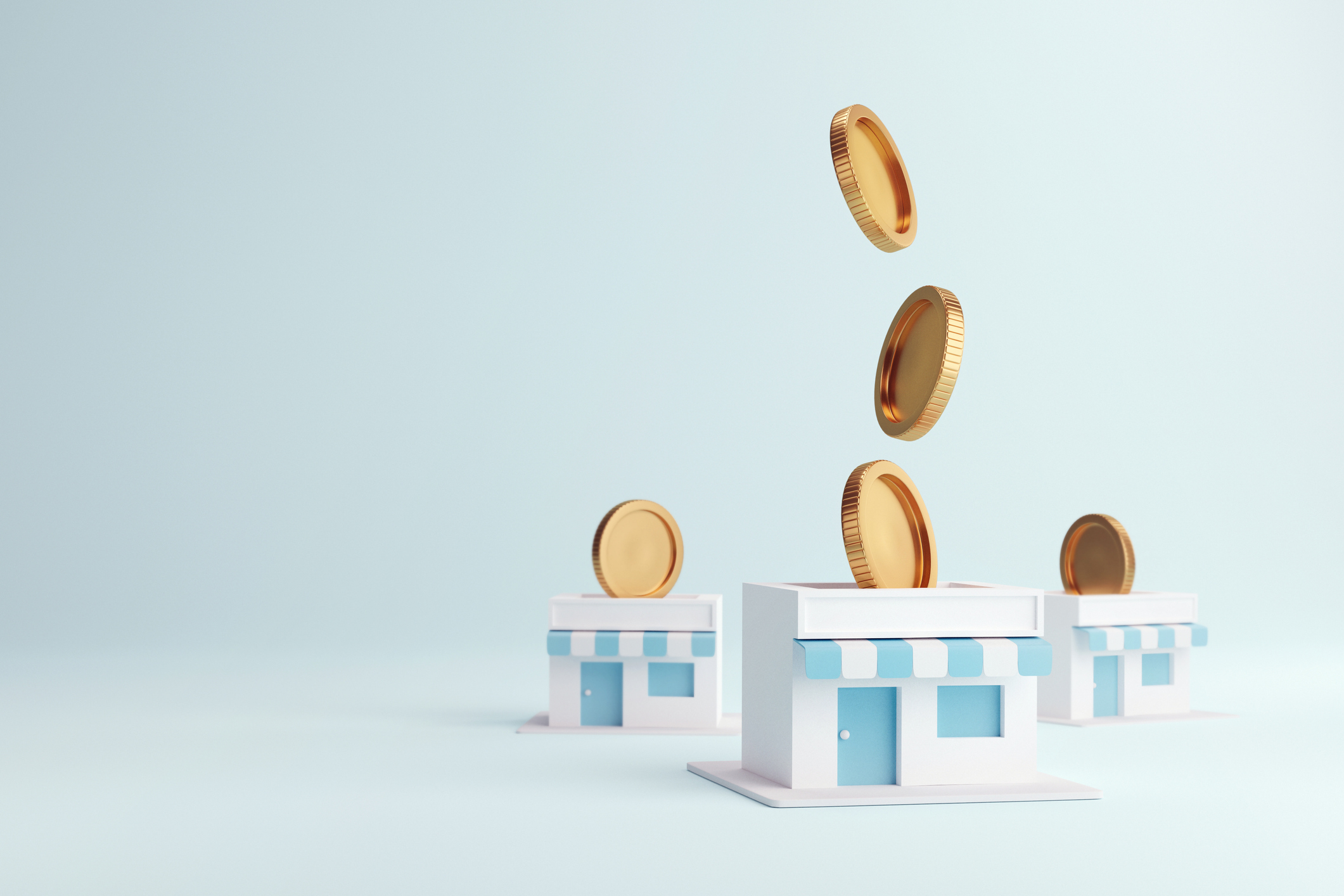Three mistakes to avoid when investing on Aim
Investing in Aim shares can produce spectacular returns. But as Michael Taylor of Shifting Shares explains, you have to have your wits about you.
Aim was set up as the Alternative Investment Market in 1995 by the London Stock Exchange, with the aim of allowing small, growing companies to access capital more easily. It started out with ten companies, but since then more than 3,600 have raised cash from investors on Aim. The results have been mixed. At its peak more than 2,000 companies were listed on Aim, but fewer than 900 remain and in 2007 a then-member of the US regulator, the SEC, described it as “a casino”. But growth companies are always higher risk, so this may not be entirely fair.
There are a few key differences between Aim and London’s more stringently regulated main market. Companies need not have a trading record and there is no minimum market capitalisation (total shares in issue multiplied by the share price). These two rules mean there are many unproven business models on Aim. Yet amid all the blue-sky visions and dubious schemes, there have been several success stories with solid business models. Diamonds in the rough such as Domino’s Pizza and online fashion dynamo ASOS have delivered staggering returns for shareholders.
Given this wide variation in returns, Aim is not a market for index trackers. It’s a market of stocks, rather than a stockmarket – if you want to make decent returns, you have to be picky. But if you are willing to get your hands dirty and do the work, the rewards can truly be life-changing. Chris Boxall of Aim specialists Fundamental Asset Management notes that a company’s Aim admission document is “essential reading for any prospective investor” and yet it’s one that many ignore. So rather than pile in, be patient and do your research.
MoneyWeek
Subscribe to MoneyWeek today and get your first six magazine issues absolutely FREE

Sign up to Money Morning
Don't miss the latest investment and personal finances news, market analysis, plus money-saving tips with our free twice-daily newsletter
Don't miss the latest investment and personal finances news, market analysis, plus money-saving tips with our free twice-daily newsletter
As Boxall points out, “Aim’s biggest winners have nearly always experienced material short-term share price weakness at some point – ASOS... joined Aim in October 2001 at a price of 20p, but by August 2003 the price had slumped to 3p. The share price also fell from £70 in Feb 2014 to £22 by Sept 2014, only to go on and hit a high of £77 in March 2018”. This is the ultimate appeal of Aim: to find tomorrow’s big winner. In this piece, we’ll look at Aim in detail and look at three of the biggest mistakes potential Aim investors make.
A crash course in Aim investing
One concept matters more than any other when it comes to Aim – “dilution”. Companies that are not yet profitable need cash to fund their operations. In the absence of sustainable cash generation from the business itself, this has to come in the form of cash injections. So to raise cash, new shares are sold to investors in an “equity placing”. This increases the number of shares in issue – hence the term dilution.
The problem is that the new shares are usually sold for less than the prevailing market price, to attract new investors. Thus a conflict of interest arises between existing shareholders and the new ones: the former want to see the company sell its shares at a higher price to decrease dilution and minimise its need to return to the market at a later date for more (the lower the share price, the less cash the company will receive), whereas the latter are keen to get the best value for money.
Here’s a simple example of how dilution works. If we own 10,000 shares at £1 each (so a £10,000 stake) in a company worth £100,000, we own 10%. But if the company sells another 100,000 shares, our stake would halve from 10% to 5%. There is also a big difference as to how much our company’s coffers will be boosted if it places those shares with investors at 80p (£80,000 raised) and at 50p (only £50,000).
Another risk is that trading in an Aim company’s shares is not suspended when a fundraising is planned. So news of a pending placement can easily leak. In small-cap stocks that are traded on SETSqx (the trading system for less liquid stocks – more on that in a moment), it only takes a few thousand pounds’ worth of stock to move a share price. If an insider finds out about the equity placing plans and tells their friends down the pub or sells out themselves, the price can fall below the placing price – forcing the fund raising to be renegotiated for the worse, or even be cancelled. This issue is compounded by the fact that some brokers do not keep clear insider lists – and that nobody has been charged for insider trading within the last five years.
The main players on Aim
Beyond the companies themselves, there are two key players Aim investors should be aware of. The Nomad (“nominated adviser”) is supposed to be an independent corporate entity that ensures the rules of the listing are followed accordingly. This is a necessary requirement on Aim. If a company announces that its Nomad has resigned, it’s a cause for concern – the company only has a month to find a new Nomad, or else it will be forced to delist. It is the Nomad’s job to ensure that every announcement the company makes via RNS (the official channel for companies to communicate to the stockmarket through the London Stock Exchange) is fair and accurate. The trouble is, a Nomad is paid by the company itself and so poacher and gamekeeper are one and the same.
The other key player you’ll encounter is the market maker. Market makers are not specific to Aim. However, many stocks on Aim tend to be lower in value and less liquid and so trade on the London Stock Exchange’s SETSqx platform. On the main market’s Sets platform, dealing is done entirely via order book – the constant stream of buy and sell orders for large, liquid stocks means that buyers can be automatically matched up with sellers.
On the SETSqx platform, by contrast, trading is done via market makers. The market maker facilitates liquidity – ensuring that the stock can be bought and sold – by offering a two-way quoted price on the stock they are dealing in. Market makers offer both a buy and a sell price. The difference between the two is the “spread”, which is how they make their money. For example, the market maker may sell stock to us at 50p and buy it from someone else at 48p. This 2p turn is their profit. You need to consider the spread before trading. If you buy shares in a stock where the spread is 10%, it means you need to make 10% just to break even – and that doesn’t include dealing commissions.
Research can give you an edge on Aim
Despite the risks of Aim, it’s also an area of the market where an individual can gain an edge simply by doing their research. Few institutions will look at stocks valued at below £100m and so prices are often set by the retail investor. This leads both to illiquidity and, more importantly, pricing inefficiency. Many private investors have done well by building stakes in solid companies while the market ignores their prospects. But if it was easy, everybody would be doing it. Here are three common mistakes to avoid.
1 Not reading the annual report
Before investing your hard-earned cash in any business, read the last few annual reports from cover to cover. Management hides everything it doesn’t want shareholders to know in here precisely because it knows that these reports are rarely read, so it’s easy to bury negatives in a deluge of detail. You also want to ascertain whether the management are clock-punchers and empire builders, or are genuinely working in their shareholders’ best interests.
Check what they pay themselves and how much of the business they own. Look specifically at how many shares they have bought with their own cash. You can check this by seeing if the directors have bought any shares in the open market. Any purchases, along with management options and vesting conditions, will be in the report. Also look out for empire-building tendencies – buying other firms via a series of dilutive equity raises may increase the size of the company, but it can do serious damage to future earnings per share.
2 Not checking cash-flow statements
New investors often overemphasise the importance of profit. Profit is great, but if the business is not collecting the cash it means little. If we buy a sofa on a “buy now, pay one year later” deal, then the sofa company books the profit the moment the sofa leaves its warehouse. But the cash won’t show up in its accounts until at least a year later. And cash is what’s needed to pay the bills.
So by checking the cash-flow statements and looking at cash flow from operations, we can see how cash is moving through the business. The cash flow of investing activities can tell us how much capital expenditure (capex) is going on investing in the business. We want to know if this is “growth capex”, which will enhance the company, or “maintenance capex”, which is required just to get by and fix wear-and-tear. If the report is lacking detail (which is sometimes the case), it’s always worth approaching the company with your queries.
3 Investing in low/no growth or unscalable businesses
One of the many issues facing Aim is that there are lots of companies with market caps of below £100m that are unable to grow substantially or achieve scale. Take Transense Technologies. It listed in 1999 and has yet to make a profit this millennium. In more than 20 years of being listed, this business has failed to produce a single shred of value for shareholders. But its directors, brokers, Nomads and PR firms – all who have been paid by the company – have done very well.
Many companies that list on Aim are junior miners or oil and gas companies. It’s not uncommon for such companies to abandon a project once it turns out to be unfeasible, change their name, refinance and explore for something else. Eventually, billions of shares are in issue, worth little more than confetti. Avoid these serial disappointments.
• Next week, we’ll look at the characteristics that winning Aim shares have in common and pick out a few potential investments.
Get the latest financial news, insights and expert analysis from our award-winning MoneyWeek team, to help you understand what really matters when it comes to your finances.
Michael Taylor is an ex-trader. For more from him, see shiftingshares.com.
-
 The most influential people of 2025
The most influential people of 2025Here are the most influential people of 2025, from New York's mayor-elect Zohran Mamdani to Japan’s Iron Lady Sanae Takaichi
-
 Millions of parents are missing out on up to £720 a year in extra pension cash – are you affected?
Millions of parents are missing out on up to £720 a year in extra pension cash – are you affected?A mum who narrowly missed out on the pension boost said she “never knew the government rule existed” and wants other parents to use it
-
 Europe’s new single stock market is no panacea
Europe’s new single stock market is no panaceaOpinion It is hard to see how a single European stock exchange will fix anything. Friedrich Merz is trying his hand at a failed strategy, says Matthew Lynn
-
 Bitcoin 'has become the reserve asset of the internet'
Bitcoin 'has become the reserve asset of the internet'Opinion The cryptocurrency has established itself as the electronic version of gold, says ByteTree’s Charlie Morris
-
 London Stock Exchange gets go-ahead to run Pisces private stock market
London Stock Exchange gets go-ahead to run Pisces private stock marketThe Pisces market will allow investors to buy and sell shares in private companies. But how will it work, when will it launch, and who is allowed to use it?
-
 James Halstead is a family firm going cheap but should you buy?
James Halstead is a family firm going cheap but should you buy?James Halstead will rebound from a weak patch, while tax changes would be a buying opportunity
-
 London Stock Exchange exodus: which companies could be next to go?
London Stock Exchange exodus: which companies could be next to go?As many companies exit London, the steady trickle of stocks listing elsewhere could turn into a stampede. Who will be next, and what does this mean for investors?
-
 Is the London Stock Exchange in peril?
Is the London Stock Exchange in peril?More than 150 companies have left the London Stock Exchange or moved their primary listing since the start of 2024. What does it mean for investors and the economy?
-
 Shein prepares for London Stock Exchange listing
Shein prepares for London Stock Exchange listingShein plans for a London Stock Exchange listing after facing hurdles in New York. It’s in a race against time. Matthew Partridge reports
-
 Four stocks for 2026
Four stocks for 2026As the year draws to an end, investment experts suggest four stocks that investors may want to keep an eye on for 2026